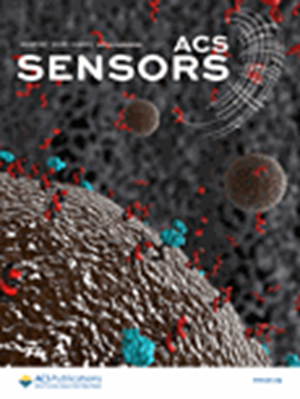Programmable and Spatial Stiffness Gradient Substrates for Highly Robust Artificial Skins
IF 8.2
1区 化学
Q1 CHEMISTRY, ANALYTICAL
引用次数: 0
Abstract
Stretchable artificial skins have garnered great interest for their potential applications in real-time human–machine interaction and equipment operation status monitoring. The local stiffer structure areas on the substrates for the functional elements have been verified to improve the robustness of the artificial skins, but it remains challenging to achieve robust sensing performance under mechanical deformation due to large mechanical mismatch and the intricate fabrication process. Herein, we propose an easy strategy for fabricating a substrate with spatial and programmable stiffness gradients to greatly decrease strain interference and increase the robustness under stretching and bending. The substrate was fabricated by direct writing PDMS with laser gelation, where the sensing elements lay on the place with higher stiffness. The modulus of the substrates varied up to 10-fold, and they also show excellent adhesive properties and durability. This configuration of the spatial stiffness gradient effectively inhibits the deformation strain effect of stretching and bending on the sensing elements. Prototype flexible sensors and light-emitting diodes can be integrated into stretchable artificial skins to exhibit highly robust performance during dynamic deformations, demonstrating an efficient pathway for fabricating robust stretchable electronics, especially for real-time health surveillance.

高鲁棒人造皮肤的可编程和空间刚度梯度基板
可拉伸人造皮肤因其在人机实时交互和设备运行状态监测方面的潜在应用而引起了人们的极大兴趣。功能元件在基板上的局部刚性结构区域已被验证,以提高人造皮肤的鲁棒性,但由于机械不匹配大和制造工艺复杂,在机械变形下实现鲁棒传感性能仍然是一个挑战。在此,我们提出了一种简单的策略来制造具有空间和可编程刚度梯度的基板,以大大减少应变干扰并增加拉伸和弯曲下的鲁棒性。采用激光凝胶法直接写入PDMS,将传感元件放置在刚度较高的位置。基材的模量变化高达10倍,并且它们也表现出优异的粘合性能和耐久性。这种空间刚度梯度的配置有效地抑制了拉伸和弯曲对传感元件的变形应变效应。原型柔性传感器和发光二极管可以集成到可拉伸人造皮肤中,在动态变形时表现出高度稳健的性能,展示了制造坚固的可拉伸电子产品的有效途径,特别是用于实时健康监测。
本文章由计算机程序翻译,如有差异,请以英文原文为准。
求助全文
约1分钟内获得全文
求助全文
来源期刊

ACS Sensors
Chemical Engineering-Bioengineering
CiteScore
14.50
自引率
3.40%
发文量
372
期刊介绍:
ACS Sensors is a peer-reviewed research journal that focuses on the dissemination of new and original knowledge in the field of sensor science, particularly those that selectively sense chemical or biological species or processes. The journal covers a broad range of topics, including but not limited to biosensors, chemical sensors, gas sensors, intracellular sensors, single molecule sensors, cell chips, and microfluidic devices. It aims to publish articles that address conceptual advances in sensing technology applicable to various types of analytes or application papers that report on the use of existing sensing concepts in new ways or for new analytes.
 求助内容:
求助内容: 应助结果提醒方式:
应助结果提醒方式:


